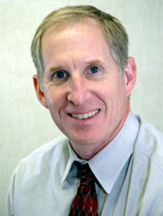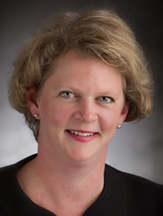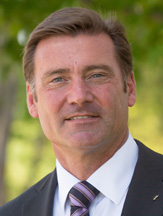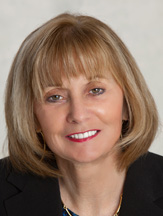Accountable Care Organizations… and the next incarnation: MACRA/MIPS
“There’s a lot changing in health care.”
“There are all kinds of ways to describe it.”
“It’s complex.”
“This is a very confusing time, and most providers don’t understand the complexities.”
“It’s very complicated.”
These are just some of the comments we heard as we began researching this article (a topic requested by our Physician Advisory Board), both from those whose names and comments are included below and from others throughout the community. Our thanks to each of them.
To understand MACRA/MIPS, it’s important to understand the evolution of Affordable Care Organizations. It began in 2001, with the publication of a report by the Institute of Medicine called “Crossing the Quality Chasm.” The report contained the then startling statement that:

Eastern Virginia Medical School
The U.S. health care delivery system does not provide consistent, high-quality medical care to all people. Americans should be able to count on receiving care that meets their needs and is based on the best scientific knowledge – yet there is strong evidence that this frequently is not the case. Health care harms patients too frequently and routinely fails to deliver its potential benefits. Indeed, between the health care that we now have and the health care that we could have lies not just a gap, but a chasm.1
“The report basically said that our health system wasn’t doing a very good job,” says Richard Bikowski, MD, a family medicine physician with Eastern Virginia Medical School. Dr. Bikowski, a member of the Board of the physician-run Sentara Quality Care Network, continues, “The leaders of health care at that time said to change that, we had to do a few things.” Those “few things” included completely redesigning the way medical care was delivered in the United States.
Care was no longer just about a physician delivering it, but rather became more about a team of care quality, care management; and as those practices began to evolve, there was talk about the practices getting together to work in collaboration. This was the genesis of the Patient Centered Medical Home. “An ACO is, essentially a network of patient centered medical homes and other quality minded physicians who are working together to provide care,” Dr. Bikowski says. “And whether you call it an ACO or a CIN, it’s essentially the same thing.”

Senior Vice President for Riverside Health System
In fact, the term Accountable Care Organization was prompted by Medicare, with the establishment of the Medicare Sharing Savings Program. “Medicare required that organizations set up a separate company from the health system or physician practice, an LLC at least, an entity with a legal structure and a board with specific committees – clinical, quality, etc. – that would sign a contract with CMS to participate in the MSSP program,” says Sally Hartman, Senior Vice President for Riverside Health System. “It referred to taking care of a particular population where you’re at some level of risk or have the opportunity for some kind of reward.”
When the Affordable Care Act was enacted years later, it adopted the concept of the ACO and started to change the way physicians are paid: based on value, rather then volume. Under the Act, each ACO had to manage a minimum of 5,000 Medicare beneficiaries for at least three years.
The ACO Medicare Savings, which began as a payment model, has morphed into a network of physicians and providers, including hospital systems, working together to give better value for the dollar: better care at lower cost.
“It’s all part of the journey to value,” says Timothy Willox, MD, Chief Medical Officer with Bon Secours Medical Group. “Right now, the payment model is fee-for-service. It doesn’t reward reducing readmissions; it doesn’t reward reducing emergency department visits.”
From the largest medical centers to small independent practices, tracking and reporting quality metrics has become a requirement of health care reform. For some, it has also become an overwhelming financial and administrative burden. Medicare has published more than 300 measures for physicians to report on. They can choose the measures appropriate for their practice, but most of these measures are developed by physician expert groups like the AMA Physician Consortium on Quality Improvement.
A 2015 article from Kaiser Health News, states
ACOs are already becoming pervasive, but they may just be an interim step on the way to a more efficient American health care system. ACOs aren’t the end game.2

Chief Medical Officer with Bon Secours Medical Group
And in fact, in 2015, the US Senate overwhelmingly (98-2) passed the Medicare Access and CHIP Reauthorization Act (MACRA), repealing the Medicare Part B Sustainable Growth Rate reimbursement formula, making sweeping changes to the way Medicare pays for physician services. “Medicare is going to start tying its payments to how well physicians are doing with our patients,” Dr. Bikowski explains, “even if a physician isn’t in a network.”
MACRA created a new, pay-for-performance oriented Medicare reimbursement program called the Merit Based Incentive Payment System, or MIPS. It will base reimbursement of physicians on four categories: quality, resource use, clinical practice improvement, and meaningful technology use.
Small, independent physicians, whose Medicare cases represent as much as 50 percent of their practice, have bitterly complained about MACRA/MIPS. In a July 2016 column for the digital network Doximity, Niran Al-Agba, MD, wrote:
Small, independent private practices are closing, increasing numbers of physicians are retiring, and fewer medical school graduates are choosing primary care. MACRA proposed reimbursement will decimate rural care as we know it. [It] will penalize 7 out of 10 small one-to-two physician practices in this country…because we will be overwhelmed complying with statistical reporting demands that do nothing to enhance the quality of care, instead of spending precious time seeing patients.

President of Sentara’s Quality Care Network (SQCN)
Dr. Al-Agba describes a family practice physician whose Medicare payments were frozen for eight months due to a technical error. More than half of her patients were on Medicare. Without a small inheritance, her solo practice would have gone bankrupt. Dr. Al-Agba asks:
Is this the future of medical care in this country? If we allow this MACRA atrocity to go into effect, who will be left to care for the sick, disabled, and elderly?3
It’s not an altogether unfair question, Dr. Willox says. “When you look at what physicians are being asked to do, if you don’t have a strong IT framework, a good electronic medical record system, and strong administrative support, you couldn’t be more at a disadvantage. If you’re an individual, or a one- or two-person practice, it’s going to be difficult to do.”
Clearly, doctors don’t want to be spending their time clicking a mouse, or checking a box. “They want to do what they do best,” Dr. Willox says. “They want to see patients, treat them and help them get better. That’s the challenge as we move into this world: how do we create efficiencies that work within the work flow, and harness the technology to enable us to remain efficient and take care of our patients.”
But are things as grim as they seem to Dr. Al-Agba and other small rural practices? “There have been exceptions for certain physicians in the past,” Dr. Willox says, “and perhaps there should be a compromise in certain circumstances. If you’re a small practice in a rural, underserved area, caring for patients, I think you should be exempt. Why should you be penalized because you’re serving these people and don’t have the infrastructure to support the requirements?”
Other options include joining organizations like Sentara’s Quality Care Network, which welcomes independent practices and solo practitioners to join, allowing them to reap the benefits of the network without requiring them to become part of the Sentara Health System. Likewise, Bon Secours Health System and Riverside Health System are exploring the possibility of inviting independent physicians to join their ACOs, and some of the larger medical groups are considering the possibility as well for their organizations.
“We are very mindful of the physicians’ interest in maintaining their independence,” says Grace Hines, President of Sentara’s Quality Care Network (SQCN). “In fact, most of the board members who run SQCN are independent providers, and most physicians in the network itself are independent.”
While there may be networks elsewhere that require exclusivity, Hines emphasizes that SQCN is not one of them. “Physicians can participate in our network, and if there’s another in this market, they can participate in that as well,” she says. “There are no restrictions other than a commitment to improve their quality and performance, while cutting costs effectively, and a desire to work collaboratively with all.”
Still, some physicians are choosing to remain unaffiliated, willing (for the time being, at least) to absorb the penalties associated with not joining an ACO or other network. At least one specialist we spoke with reported joining an ACO and subsequently leaving it because the benefits weren’t apparent.
It’s an individual choice for each individual professional and each practice. In future articles, we hope to share the experiences of area physicians, who are invited to contact our editor at 757.773.7550.
References:
1. Crossing the Quality Chasm: a New Health System for the 21st Century, report of the Committee on Quality of Health Care in America and the Institute of Medicine, July 19, 2001
2. Accountable Care Organizations, Explained, Jenny Gold, Kaiser Health News, September 14, 2015
3. How MACRA will decimate the private practice physician, Niran Al-Agba, MD, Doximity, July 20, 2016

